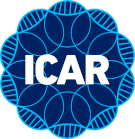Feed Intake: Genotyping and imputation
One of the issues with combining data from research herds for genomic analysis is that different SNP chips may be used for each experiment. Fortunately, most of the commercially available SNP chips have many SNP in common, so a set of common SNPs can generally be identified. Another option is to impute genotypes from a low density to a higher one (e.g. from 50K to 777K (HD)), which may be advantageous for some (Bayesian) approaches for genomic prediction. This strategy relies on a reference dataset of bulls or cows that are genotyped at high density and that have some genetic ties (i.e. haplotypes in common) with the animals in the dataset that is to be imputed. Pryce et al. [1] showed that it was possible to impute the genotypes of research herd animals from 50K to HD using two independent reference datasets with high concordance. For animals with historical feed intake records, but no DNA information, imputation of the genotypes might be considered[2][3] when offspring are genotyped.
- ↑ Pryce, J.E., Arias, J., Bowman, P.J., Davis, S.R., Macdonald, K.A., Waghorn, G.C., Wales, W.J., Williams, Y.J., Spelman, R.J., and Hayes, B.J. 2012. Accuracy of genomic predictions of residual feed intake and 250-day body weight in growing heifers using 625,000 single nucleotide polymorphism markers. J. Dairy Sci. 95:2108-2119.
- ↑ Bouwman, A.C., Hickey, J.M., Calus, M.P.L., and Veerkamp, R.F. 2014. Imputation of non-genotyped individuals based on genotyped relatives: Assessing the imputation accuracy of a real case scenario in dairy cattle. Genet Sel Evol. 46:6. doi: 10.1186/1297-9686-46-6.
- ↑ Pimentel, E., Wensch-Dorendorf, M., Konig, S., and Swalve, H. 2013. Enlarging a training set for genomic selection by imputation of un-genotyped animals in populations of varying genetic architecture. Genet. Select. Evol. 45:12.
